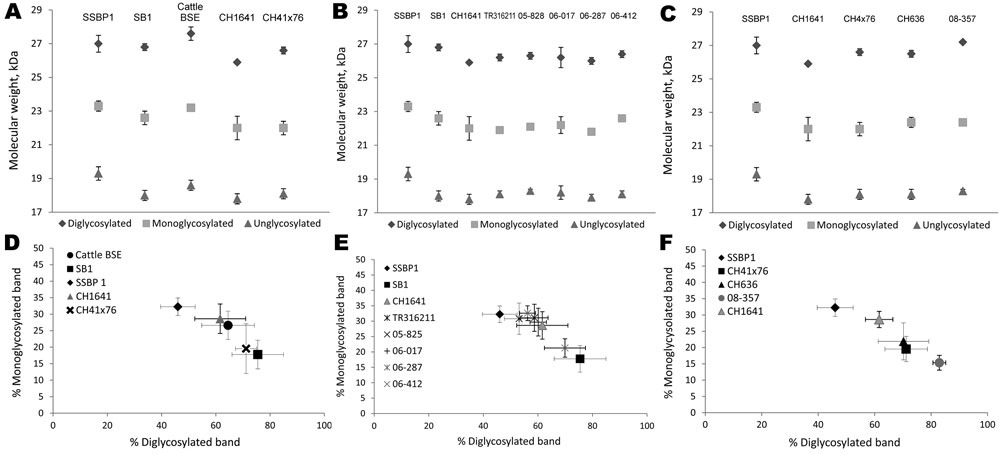Volume 17, Number 1—January 2011
Research
Molecular Typing of Protease-Resistant Prion Protein in Transmissible Spongiform Encephalopathies of Small Ruminants, France, 2002–2009
Figure 2

Figure 2. Molecular mass obtained for the di-, mono-, and unglycosylated protein bands (A–C) and the glycoform proportions (D–F) between the diglycosylated band and the monoglycosylated band of the protease-resistant prion protein of the reference transmissible spongiform encephalopathies isolates (A, D), CH1641-like isolates in sheep (B, E), and unusual isolates in goats (C, F). Results were obtained from immunoblots detected by Bar233 antibody. BSE, bovine spongiform encephalopathy.
Page created: July 08, 2011
Page updated: July 08, 2011
Page reviewed: July 08, 2011
The conclusions, findings, and opinions expressed by authors contributing to this journal do not necessarily reflect the official position of the U.S. Department of Health and Human Services, the Public Health Service, the Centers for Disease Control and Prevention, or the authors' affiliated institutions. Use of trade names is for identification only and does not imply endorsement by any of the groups named above.